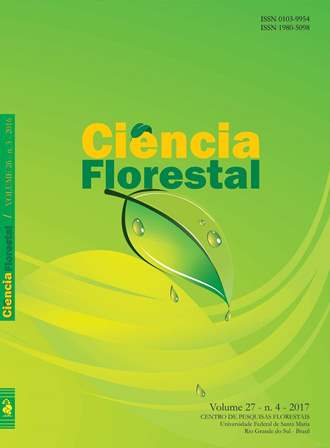STRUCTURE OF WOODY PLANTS IN CLOSED SHRUBBY FORMATION ON SANDY COASTAL PLAIN AT MARAMBAIA, RJ
DOI:
https://doi.org/10.5902/1980509830290Keywords:
diversity, phytosociology, richness.Abstract
The present study described the floristic and structure of the woody layer in closed shrubby formation on a sandy coastal plain at Restinga da Marambaia and compare this vegetation to other physiognomically similar plant communities. Using the line intercept method, a total of 1170m were sampled, resulting in 1938 woody plants (dbh≥0.5cm), 73 species, 30 families. The families with highest importance values were Myrtaceae (21%), Nyctaginaceae (7.2%), Malvaceae (7.1%). Myrtaceae had the most species (15) and also the greatest number of individuals (379). The species with the greatest importance values were Guapiraopposita, Maytenusobtusifolia, Pavoniaalnifolia, Aspidospermaparvifolium, Eugenia copacabanensis, Myrrhiniumatropurpureum, Manilkarasubsericea, Ouratea cuspidate, Erythroxylumovalifolium. Diversity index H´=3.49, J´=0.81. Similarity between this community and formation in Maricá (CS=0.37, CN=0.15). This closed shrubby formation was classified as Myrtaceae thicket based on floristic, physiognomic, structural parameters. Although this community and that of Maricá are similar in terms of physiognomy and Myrtaceae species richness and importance, the similarity value is low, both quantitatively and qualitatively terms, revealing a great degree of heterogeneity between plant communities along the coast. This has created a certain amount of difficulty in placing plant communities within existing classification systems.







